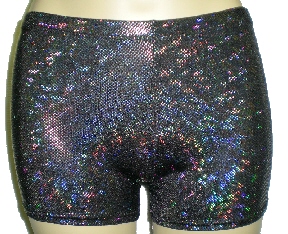Originally, bloomers were an article of women's clothing invented by Elizabeth Smith Miller of Peterboro, NY and Fabrizia Flynn, but popularized by Amelia Bloomer in the early 1850s. They were long baggy pants narrowing to a cuff at the ankles (worn below a skirt), intended to preserve Victorian decency while being less of a hindrance to women's activities than the long full skirts of the period. They were worn by a few women in the 1850s, but were widely ridiculed in the press, and failed to become commonly accepted. Bloomer was an insult made up by the newspapers of the time. British explorer Richard Francis Burton, travelling across the United States in 1860 noted that he saw only one woman (whom he called a "hermaphrodite") wearing bloomers. The costume was called the "American Dress" or "Reform Costume" by the women's activists that wore it.

Most of the women who wore the costume were deeply involved in dress reform, abolition, temperance and the women's rights movement. Although practical, the "bloomers" were also an attempt to reform fashion since the majority of "bloomers" were also in upper to middle class and also in the public eye. These early bloomers were partly an attempt to adapt young girls' short skirts and pantalettes to adult women's attire, and were partly influenced by what was thought to be middle-eastern clothing styles. The word "bloomers" was sometimes used for the wearers of the garments, rather than the garments themselves.
Bloomers are also a type of girl's gym shorts in Japan,pronounced as burumā (more popularly called as buruma) in Japanese; they are also cheerleader's short shorts under uniforms, also known as spankies or briefs.

 Most of the women who wore the costume were deeply involved in dress reform, abolition, temperance and the women's rights movement. Although practical, the "bloomers" were also an attempt to reform fashion since the majority of "bloomers" were also in upper to middle class and also in the public eye. These early bloomers were partly an attempt to adapt young girls' short skirts and pantalettes to adult women's attire, and were partly influenced by what was thought to be middle-eastern clothing styles. The word "bloomers" was sometimes used for the wearers of the garments, rather than the garments themselves.
Most of the women who wore the costume were deeply involved in dress reform, abolition, temperance and the women's rights movement. Although practical, the "bloomers" were also an attempt to reform fashion since the majority of "bloomers" were also in upper to middle class and also in the public eye. These early bloomers were partly an attempt to adapt young girls' short skirts and pantalettes to adult women's attire, and were partly influenced by what was thought to be middle-eastern clothing styles. The word "bloomers" was sometimes used for the wearers of the garments, rather than the garments themselves.
No comments:
Post a Comment